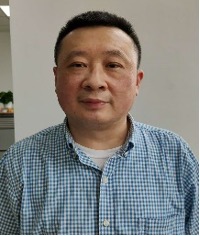Nanomechanic Characterizations
with High Pressure Techniques
Bin Chen1,*,
Xiaoling Zhou 1, Jianing Xu1, Hongliang Dong1,
Yanju Wang1, Zongqiang Feng2, Xiaoxu Huang2
1Center for High Pressure Science and Technology
Advanced Research, Pudong, Shanghai 201203, China
2International Joint Laboratory for Light
Alloys (MOE), College of
Materials Science and Engineering, Chongqing University, Chongqing 400044, China
ABSTRACT: High pressure techniques
have been introduced to nanomaterials research for about three decades. Most of
the studies, especially in the earlier time, were mainly about the structural
transition and equation of state with XRD, Raman and IR spectroscopy
characterizations. In recent years, we extended the explorations for the
plastic deformation of nanomaterials by employing radial diamond-anvil cell XRD
and TEM. We have successfully probed the lower grain size limit of dislocation
activities, but also seen that partial dislocations and deformation twinning
dominate the plastic deformation below 20 nm. Our high-pressure studies reveal
that dislocations are operative in nanoceramics. We have observed the reversal
in the grain size dependence of grain rotation in nickel. It is detected that
the strengthening of nickel nanocrystals can be extended down to 3 nm.
Excitingly, we found that nanometals in a certain range of grain size exhibit
both superplasticity and high strength. Compared with the traditional
techniques, high pressure techniques are more advantageous in applying
mechanical load to nanosized samples and characterizing the structural and
mechanical properties in situ or ex situ, which could help unveil the mysteries
of mechanics at the nanoscale and bridge the knowledge on the material
mechanics at the multiscale. With these knowledge, more advanced materials
could be fabricated for wider and specialized applications.

Bin Chen got his B.S. in 1988 from Sichuan University with the major in physics and Ph.D. in 2002 from University of Missouri-Kansas City. Later he worked in University of Central Florida, University of California, Berkeley, and Lawrence Berkeley National Lab. In 2014, he returned to China and joined HPSTAR.